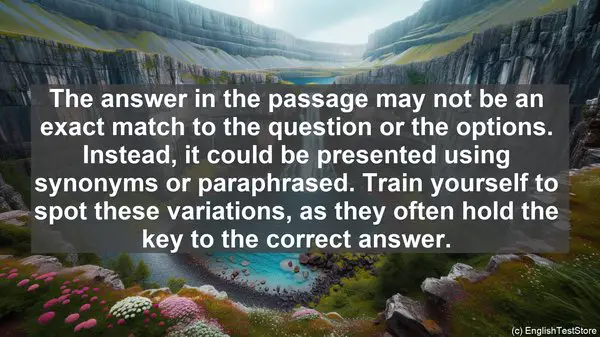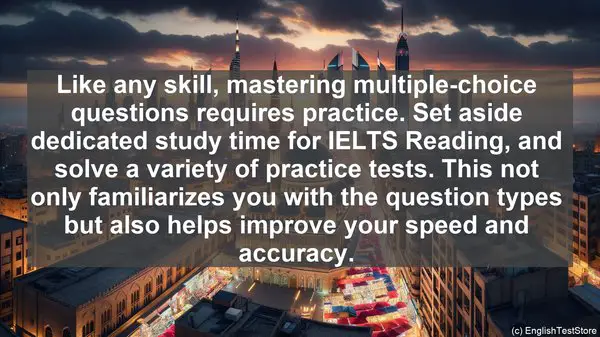Introduction
Welcome to today’s lesson, where we’ll be discussing an essential aspect of the IELTS Reading section: multiple-choice questions. Many students find these questions challenging due to their structure and time constraints. But fear not! With the right strategies, you can tackle them with confidence and accuracy. So, let’s dive in!
1. Skim the Passage First
Before delving into the questions, take a quick glance at the passage. This initial skim helps you grasp the main idea, identify the tone, and get an overall understanding. It also aids in forming a mental framework, making it easier to locate specific information later.

2. Read the Questions Carefully
Each multiple-choice question has its nuances. Pay attention to keywords, such as ‘not,’ ‘except,’ or ‘most likely.’ These words can significantly alter the answer. Underline or highlight them to avoid confusion during the answer selection process.
3. Predict the Answer
After reading the question, try to come up with a possible answer before looking at the options. This prediction helps you stay focused and quickly eliminate irrelevant choices, increasing your chances of selecting the correct one.
4. Be Aware of Synonyms and Paraphrasing
The answer in the passage may not be an exact match to the question or the options. Instead, it could be presented using synonyms or paraphrased. Train yourself to spot these variations, as they often hold the key to the correct answer.
5. Use Process of Elimination
If you’re unsure about an answer, start by eliminating the options you know are incorrect. This strategy narrows down the choices, increasing the probability of selecting the right one. Even if you’re left with two options, your chances of guessing correctly are 50%, as opposed to 25% with four options.
6. Pay Attention to Detail
Sometimes, a small detail in the passage can make a significant difference in the answer. Train yourself to notice these details, such as numbers, dates, or specific examples. They often serve as crucial indicators.
7. Don’t Overthink
While it’s essential to analyze the options, overthinking can lead to confusion and indecisiveness. If you find yourself spending too much time on a question, take a step back, and approach it with a fresh perspective. Sometimes, the answer is simpler than it seems.
8. Manage Your Time Wisely
In the IELTS Reading section, time is of the essence. Allocate a specific time limit for each passage and stick to it. If you’re struggling with a question, move on and come back to it later. Remember, it’s better to answer all the questions than leave some unanswered due to time constraints.
9. Practice, Practice, Practice
Like any skill, mastering multiple-choice questions requires practice. Set aside dedicated study time for IELTS Reading, and solve a variety of practice tests. This not only familiarizes you with the question types but also helps improve your speed and accuracy.

10. Review and Learn from Mistakes
After solving a practice test, don’t just check the answers. Analyze the questions you got wrong and understand why. Was it a misinterpretation, lack of knowledge, or a careless mistake? Learning from these errors ensures you don’t repeat them in the actual exam.
